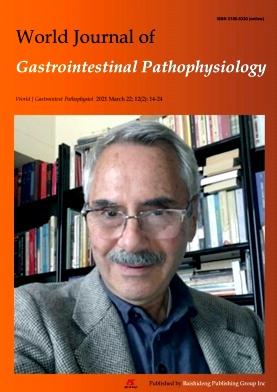Neurophysiological mechanisms of bradykinin-evoked mucosal chloride secretion in guinea pig small intestine.
引用次数: 1
Abstract
AIM To investigate the mechanism for bradykinin (BK) to stimulate intestinal secretomotor neurons and intestinal chloride secretion. METHODS Muscle-stripped guinea pig ileal preparations were mounted in Ussing flux chambers for the recording of short-circuit current (Isc). Basal Isc and Isc stimulated by BK when preincubated with the BK receptors antagonist and other chemicals were recorded using the Ussing chamber system. Prostaglandin E2 (PGE2) production in the intestine was determined by enzyme immunologic assay (EIA). RESULTS Application of BK or B2 receptor (B2R) agonist significantly increased the baseline Isc compared to the control. B2R antagonist, tetrodotoxin and scopolamine (blockade of muscarinic receptors) significantly suppressed the increase in Isc evoked by BK. The BK-evoked Isc was suppressed by cyclooxygenase (COX)-1 or COX-2 specific inhibitor as well as nonselective COX inhibitors. Preincubation of submucosa/mucosa preparations with BK for 10 min significantly increased PGE2 production and this was abolished by the COX-1 and COX-2 inhibitors. The BK-evoked Isc was suppressed by nonselective EP receptors and EP4 receptor antagonists, but selective EP1 receptor antagonist did not have a significant effect on the BK-evoked Isc. Inhibitors of PLC, PKC, calmodulin or CaMKII failed to suppress BK-induced PGE2 production. CONCLUSION The results suggest that BK stimulates neurogenic chloride secretion in the guinea pig ileum by activating B2R, through COX increasing PGE2 production. The post-receptor transduction cascade includes activation of PLC, PKC, CaMK, IP3 and MAPK.缓激肽诱发豚鼠小肠粘膜氯离子分泌的神经生理机制。
目的探讨缓激肽(BK)刺激肠道分泌运动神经元和肠道氯离子分泌的机制。方法将豚鼠脱皮回肠制剂置于磁通室中记录短路电流(Isc)。使用Ussing室系统记录基底Isc和BK受体拮抗剂和其他化学物质预孵育时BK刺激的Isc。采用酶免疫法(EIA)测定肠内前列腺素E2 (PGE2)的产生。结果应用BK或B2受体(B2R)激动剂可显著提高基线Isc。B2R拮抗剂、河河毒素和东莨菪碱(阻断毒蕈碱受体)显著抑制BK引起的Isc升高,BK引起的Isc被环氧化酶(COX)-1或COX-2特异性抑制剂以及非选择性COX抑制剂抑制。粘膜下层/粘膜制剂与BK预孵育10分钟可显著增加PGE2的产生,而COX-1和COX-2抑制剂可消除这种情况。非选择性EP受体和EP4受体拮抗剂可抑制bk诱导的Isc,但选择性EP1受体拮抗剂对bk诱导的Isc无显著影响。PLC、PKC、钙调素或CaMKII抑制剂无法抑制bk诱导的PGE2生成。结论BK通过激活B2R,通过COX增加PGE2的产生,刺激豚鼠回肠神经源性氯离子分泌。受体后转导级联包括PLC、PKC、CaMK、IP3和MAPK的激活。
本文章由计算机程序翻译,如有差异,请以英文原文为准。
求助全文
约1分钟内获得全文
求助全文

 求助内容:
求助内容: 应助结果提醒方式:
应助结果提醒方式:


